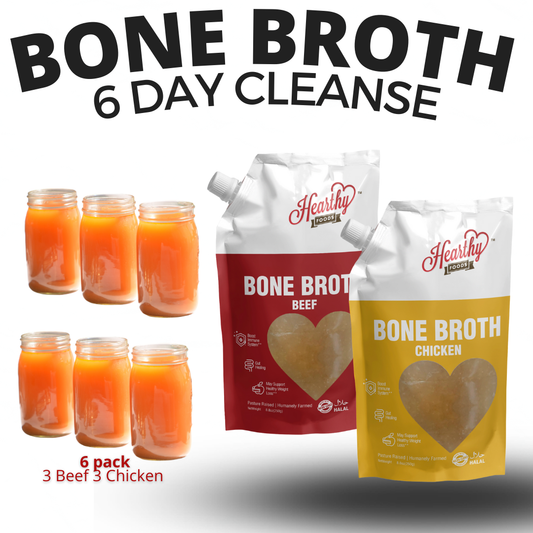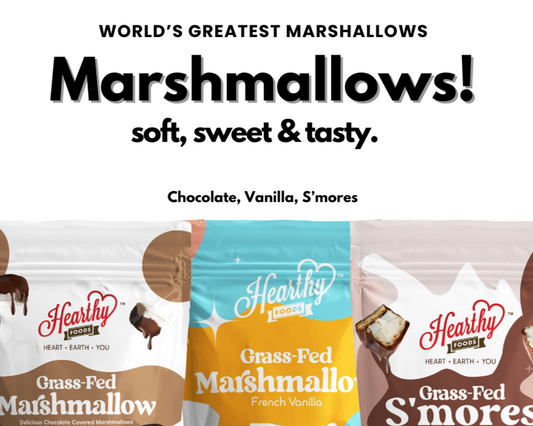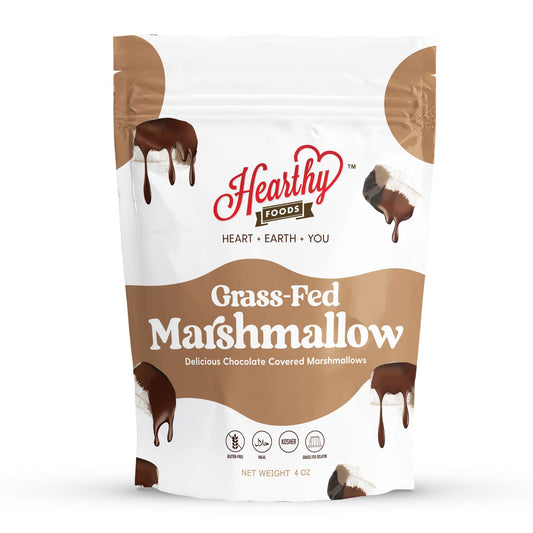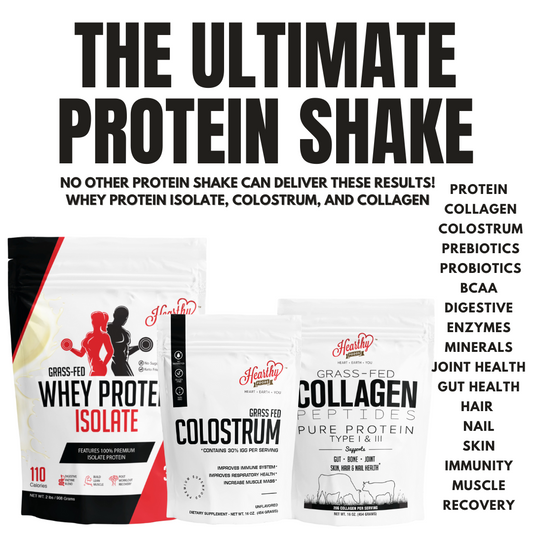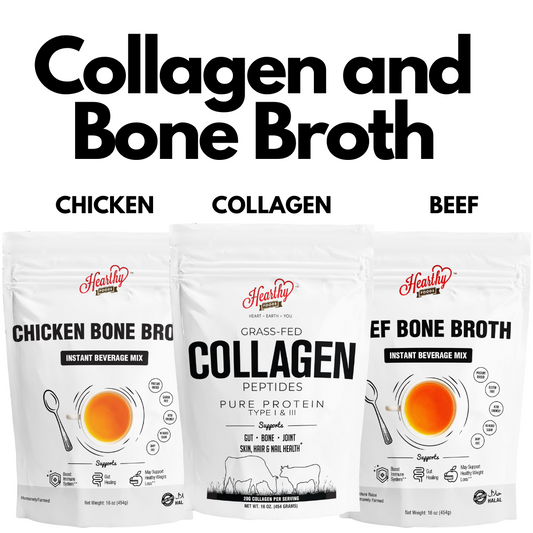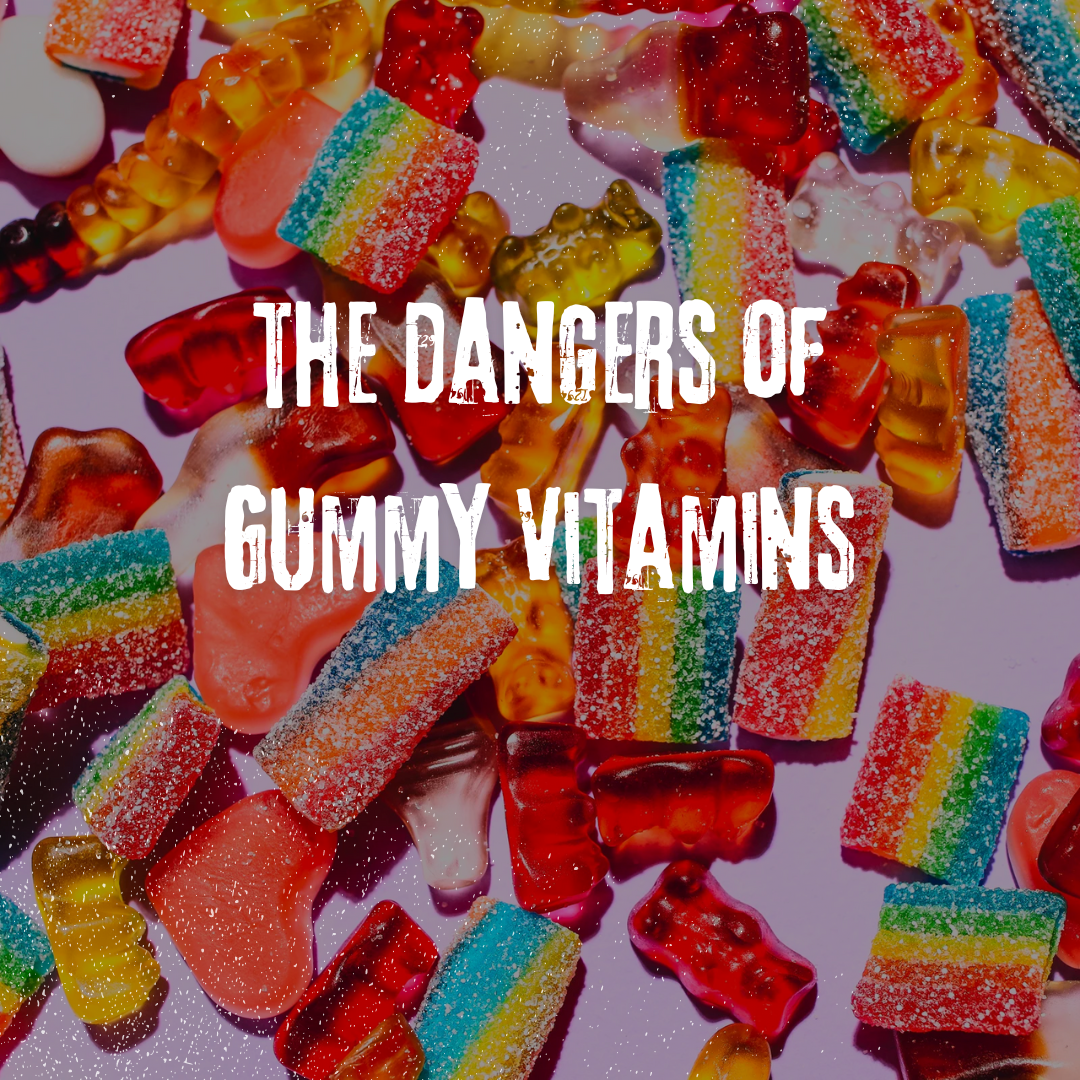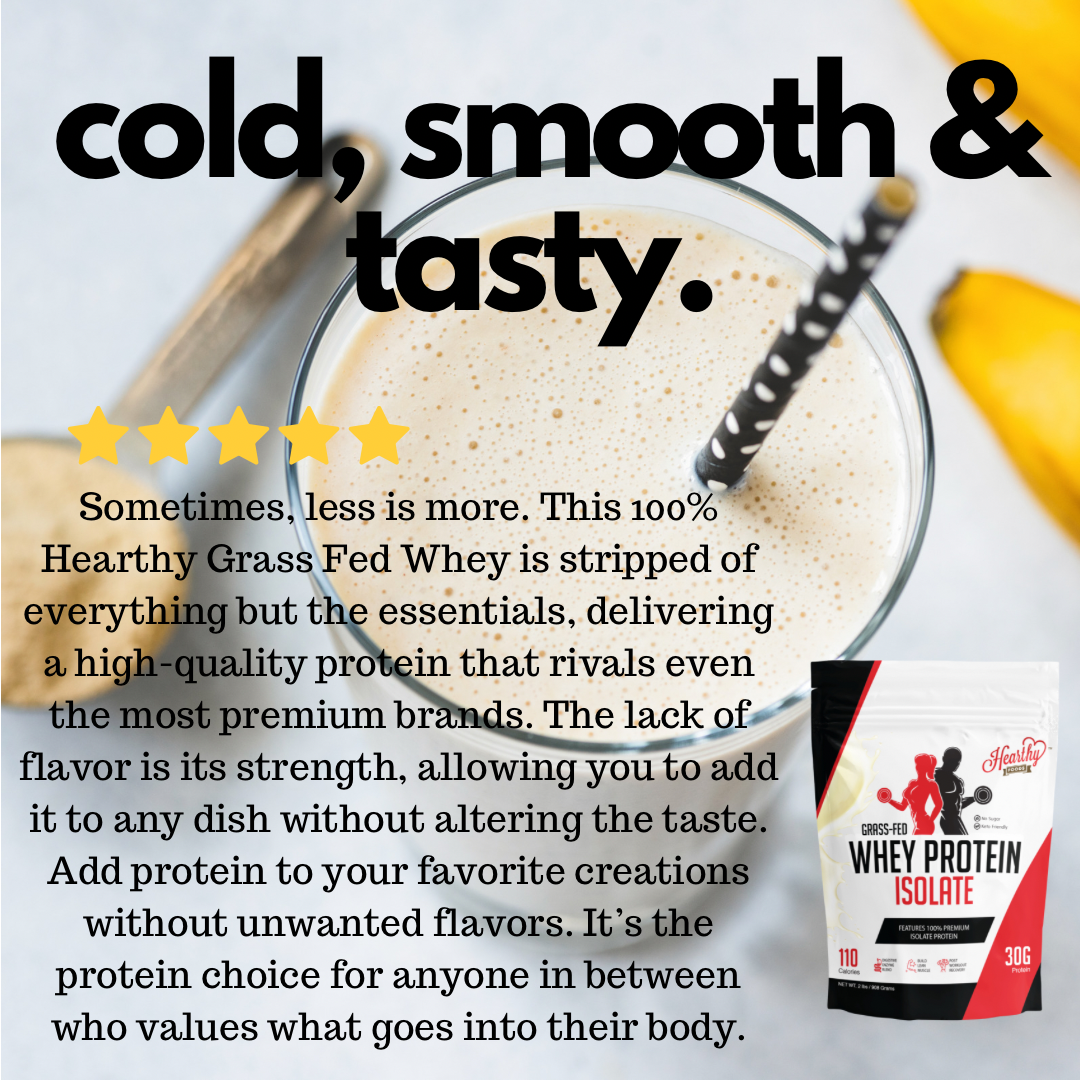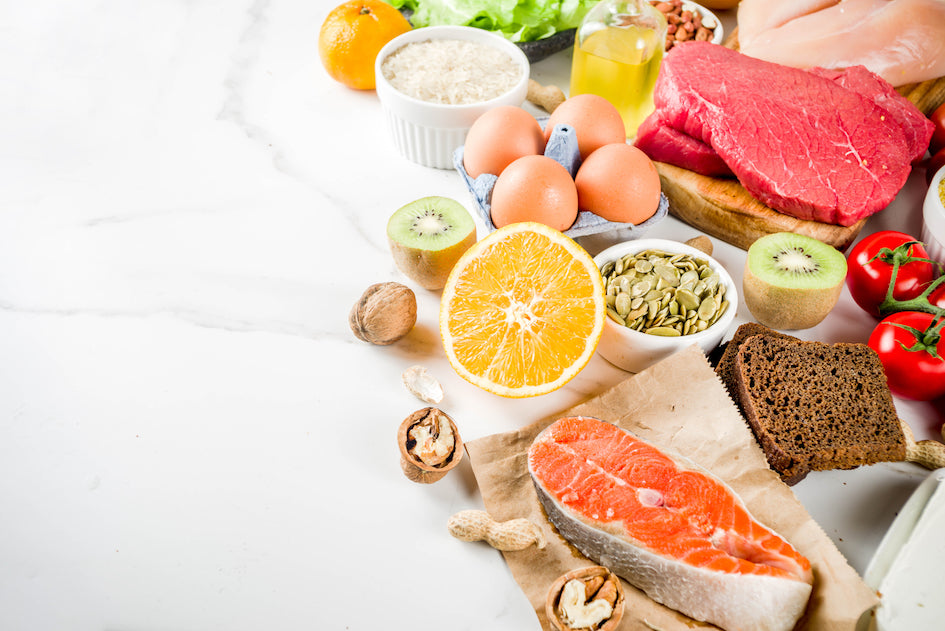
Your Guide to Hearthy Foods’ Low FODMAP Products
Recently, we’ve been sharing recipes that adhere to the Low FODMAP diet, like our Tuscan Kale & Almond Flour Crackers, or our Grilled Asian-Style Meatballs. With our large variety of alternative, gluten free products, it just so happens that many of them can also be safely consumed on the Low FODMAP diet! In this blog post, we’ll review which products are Low FODMAP according to resources and information collected from Monash University, and how you can use them in your everyday cooking and baking.
What is the Low FODMAP Diet?
If you’re unfamiliar with the diet, the FODMAP diet is a 3-step dietary plan that was designed to provide relief for individuals suffering from Irritable Bowel Syndrome (IBS). “FODMAP” stands for Fermentable Oligosaccharides, Disaccharides, Monosaccharides and Polyols, which are short-chain carbohydrates that are rapidly fermented by bacteria in the gut. For those with IBS, this can trigger unpleasant symptoms such as bloating, gas and stomach pain. They’re found in everyday foods, such as wheat, apples, garlic, onion, cauliflower and honey, to name a few. Fortunately, research has shown that successful implementation of the diet can reduce stomach pain, bloating and distension, and improve bowel habits and quality of life. To learn more and for additional resources, visit MonashFODMAP.com.
Which of Our Products are Low FODMAP?
Our Low FODMAP Nut Flours

Almond Flour - According to Monash University’s Low FODMAP Diet app, almond flour is Low FODMAP in 1/4 cup servings, but high FODMAP in 1/2 cup servings. Almond flour is a great base flour to use for bread, pancakes, brownies, cookies, cakes, muffins and waffles. Use them in combination with finer flours, like tapioca flour or cassava flour, to achieve the best texture.
Pecan Flour - Pecans are Low FODMAP in 0.71 ounces, which translates to about 19 grams of our pecan flour. While FODMAP content can vary from its whole form to the flour form, keeping the serving size low at 19 grams should be safe. Pecan flour can be used similarly to almond flour.
Our Low FODMAP Fruit Flours
Cacao Flour - Cacao flour is Low FODMAP at 2 heaped teaspoons (0.28 ounces), and high FODMAP in 50 teaspoons (7.0 ounces). Use this to add chocolatey flavor to anything you desire - smoothies, oatmeal and baked goods.
Cassava Flour - Cassava flour is Low FODMAP in 15 gram servings, which equates to 2 tablespoons. Although this is a small amount, it can be combined with other Low FODMAP flours, like almond, quinoa and/or oat flour, to achieve a perfect bready texture in baked goods, while keeping the FODMAP-levels low.
Potato Flour - There are no detectable FODMAPs in fresh potato, so potato flour is likely safe at standard serving sizes. Potato flour creates moist products due to the flour’s ability to attract and retain moisture. Use it combined with other flours to make the perfect bread flour mixture.
Kabocha Pumpkin Flour - Fresh Kabocha pumpkin is Low FODMAP in 2.65 ounce servings (2/3 cup). There are no detectable FODMAPs in fresh Kabocha pumpkin, so a serving of our flour seems to be safe. This flour is perfect for rice breads, loaves and cakes.
Tapioca Flour - Tapioca flour is safe in 2/3 cup servings (3.53 ounces). As a finer flour, it adds lightness to baked goods, making it perfect to pair with denser flours like almond flour, pecan flour or oat flour. You can use it to make perfect crepes, pancakes and breads, or to thicken sauces.
Our Low FODMAP Vegetable Flours
Broccoli Flour - Fresh broccoli is Low FODMAP in 2.65 ounce servings (3/4 cup). As 3/4 cup of broccoli has ~4.5 grams of carbohydrates, this equates to about 2 tablespoons of our broccoli flour. A tiny bit of this flour is all you need to sneak a little bit of health in dips, sauces or savory baked goods.
Carrot Flour - There are no detectable FODMAPs in carrots, so a full serving of carrot flour is likely safe on the Low FODMAP diet. Its density and versatility make it easy to swap into recipes that call for all-purpose flour. If you want to be cautious for potential FODMAP content, combine this with other FODMAP-friendly flours.
Kale Flour - There are only trace amounts of FODMAPs found in kale. This flour is potent, and a tiny bit is all you need for a burst of kale flavor. Sneak them into savory baked goods like muffins, crackers and loaves, or use them directly in smoothies or acai bowls.
Parsnip Flour - Similar to carrots, there are no detectable FODMAPs in parsnips. This flour can be added to many recipes such as meatloaf, breads, pancakes, brownies, cookies, cakes, muffins, waffles, ice creams, yogurt, smoothies - you name it. It adds a subtle sweetness and an extra boost of nutrition and flavor.
Our Low FODMAP Grain Flours
Buckwheat Flour - Buckwheat flour has been tested to be Low FODMAP at 2/3 cup, or 3.53 ounces. Buckwheat provides a rich, earthy flavor and is best used for quick breads and yeast breads.
Millet Flour - Millet flour has been tested to be Low FODMAP at 2/3 cup. Its light, mild flavor makes it perfect for sweet or savory baking, and adds a cake-like crumb to baked goods.
Oat Flour - Oat flour has been tested to be Low FODMAP at 1/2 cup servings. Oat flour is a great substitute for all purpose flour. Use it for cakes, crunchy cookies, moist breads, crusts, cupcakes and muffins.
Quinoa Flour - Quinoa flour is Low FODMAP in 2/3 cup servings. This high protein and high fiber flour helps provide structure and rise to baked goods, so the possibilities are endless. It also adds a unique grassy flavor.
Rice Flour - Rice flour is Low FODMAP in 2/3 cup servings. Combine rice flour with other Low FODMAP flours for use in quick breads and cookies. It can be used to thicken soups and stews, and can also be used as a crispy coating for fried goods.
Other Low FODMAP Products
Gluten-Free All Purpose Flour - Our gluten-free all-purpose flour is made with oat flour, tapioca flour, xanthan gum, making at least 1/2 a cup Low FODMAP.
Grass-Fed Gelatin Marshmallows - No High-FODMAP ingredients here! Our marshmallows contain simple ingredients, with the only carbohydrates being sugar and tapioca flour.
Grass-Fed Collagen and Grass-Fed Gelatin - As collagen and gelatin do not contain carbohydrates, both are FODMAP-friendly.
We hope this list gave you some ideas on ways to use our Low FODMAP products. Do you have your own favorite ways to use our specialty flours? Let us know in the comments below!





